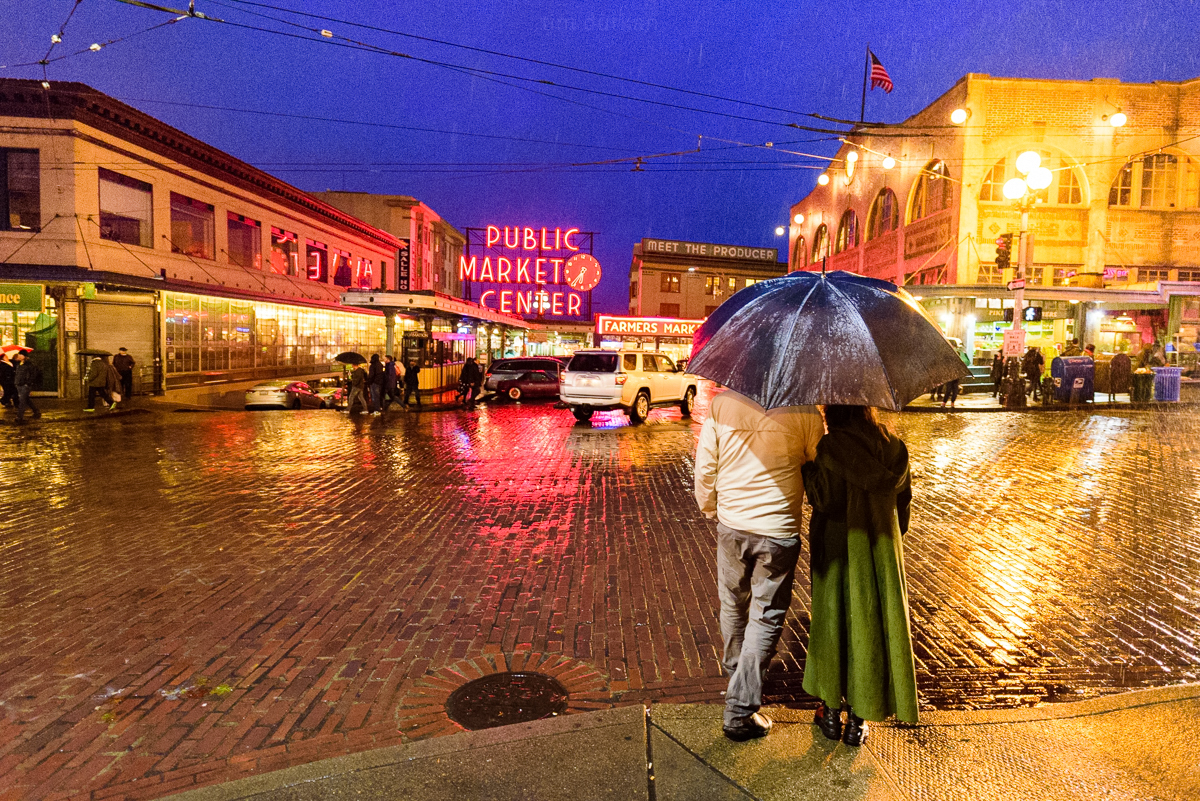 Five sculpted flowers standing up to three stories tall now greet visitors to Pacific Science Center and neighboring Seattle Center with a creative lesson in renewable energy thanks to a partnership between the Science Center and Seattle City Light.
Five sculpted flowers standing up to three stories tall now greet visitors to Pacific Science Center and neighboring Seattle Center with a creative lesson in renewable energy thanks to a partnership between the Science Center and Seattle City Light.

Artist Dan Corson in the orange striped shirt greets visitors to Sonic Bloom after the solar-powered art project was turned on Wednesday.
Five sculpted flowers standing up to three stories tall now greet visitors to Pacific Science Center and neighboring Seattle Center with a creative lesson in renewable energy thanks to a partnership between the Science Center and Seattle City Light.
“Sonic Bloom” is a solar-powered work of art created by Dan Corson on behalf of City Light’s Green Up program, which supports the development of new renewable energy sources.
“It was exciting to be able to sculpturally showcase solar generation in a more unique and playful way that goes beyond standard rooftop installations. While we can’t actually see electricity, we can see the effects of it through these dynamic flowers both day and night,” Corson said. “Working with Pacific Science Center and Seattle City Light allowed me to continue my exploration of green design and new technologies and how these tools can frame and amplify the natural world and our shifting relationship to it.”
Mayor Mike McGinn, City Councilmember Nick Licata, Pacific Science Center CEO Bryce Seidl and City Light Conservation Resources Director Glenn Atwood joined Corson Wednesday to turn on Sonic Bloom.
“Solar energy is part of the future of sustainable energy here in Seattle,” Mayor McGinn said. “This is a creative way to engage people in a conversation about renewable energy and climate change.”
Each of the flowers glows when the sun shines through the petals during the day and light up at night. They also individually “sing” harmonic tones whenever someone walks by. Solar panels atop each flower and the Science Center roof generate enough electricity to run the interactive audio experience and the dynamic evening lighting.
“Sonic Bloom’s impressive combination of art, science and energy that has the power to inspire hundreds of thousands of people,” Licata said. “Equally impressive is the partnership between Seattle City Light and Pacific Science Center that allowed Dan Corson to share his artistic vision with our community.”
Interpretive signage at the exhibition and inside Pacific Science Center explains how solar energy works and how it is powering the flowers.
“Few issues are of greater importance to our generation and the generations to come than energy. As part of the Science Center’s commitment to building a more scientifically literate society, we are proud to share Sonic Bloom with our community and visitors,” Seidl said. “Sonic Bloom will not only help increase awareness of the importance and opportunities of renewable energy; it will also be a beautiful and captivating gathering place, where art and science can be appreciated and explored at any time, any day.”
The project is being supported by a grant from City Light’s Green Up program and in-kind donations. The program sets aside some of the money collected from participants to promote awareness of renewable energy.
“Developing new clean, renewable energy sources beyond the hydroelectric power we are blessed with in the Pacific Northwest is a critical part of meeting our community’s energy needs while limiting our impact on climate change,” Atwood said. “Sonic Bloom demonstrates, in a very creative way, how solar can be a part of that sustainable energy future.”
Sonic Bloom also is another example of how renewable energy investments are building the green economy and creating jobs in Washington. The 270 custom solar panels that will power Sonic Bloom are being made in Marysville by Silicon Energy. In addition to the solar panels, there were 16 other local fabricating companies and installers Corson worked with to create this project.
Seattle City Light is the 10th largest public electric utility in the United States. It has some of the lowest cost customer rates of any urban utility, providing reliable, renewable and environmentally responsible power to nearly 1 million Seattle area residents. City Light has been greenhouse gas neutral since 2005, the first electric utility in the nation to achieve that distinction.
The not-for-profit Pacific Science Center celebrated 50 years of discovery in October, 2012. Looking ahead to the decades to come, the Science Center is committed to repairing and refreshing its own historic campus so it can continue to inspire for generations to come while also increasing the public’s understanding of environmentally sustainable options in their own lives and homes.
Dan Corson is an award-winning public artist and sculptor who served as Seattle City Light’s first Artist-in-Residence for the City of Seattle’s 1% for Arts program in 2001. He holds a master of fine arts degree in sculpture from the University of Washington, was a Skowhegan Scholar at the Skowhegan School of Painting and Sculpture and a Pilchuck Scholar at the Pilchuck Glass School. Among numerous projects locally and nationally, he has created “Wave Rave Cave” under the Alaskan Way viaduct for City Light, the “Rain Drum Courtyard” at the Cedar River Watershed Visitors Center in North Bend for Seattle Public Utilities and a number of projects for Sound Transit including the green and black striped “Safety Spires” at the Sound Transit maintenance facility.